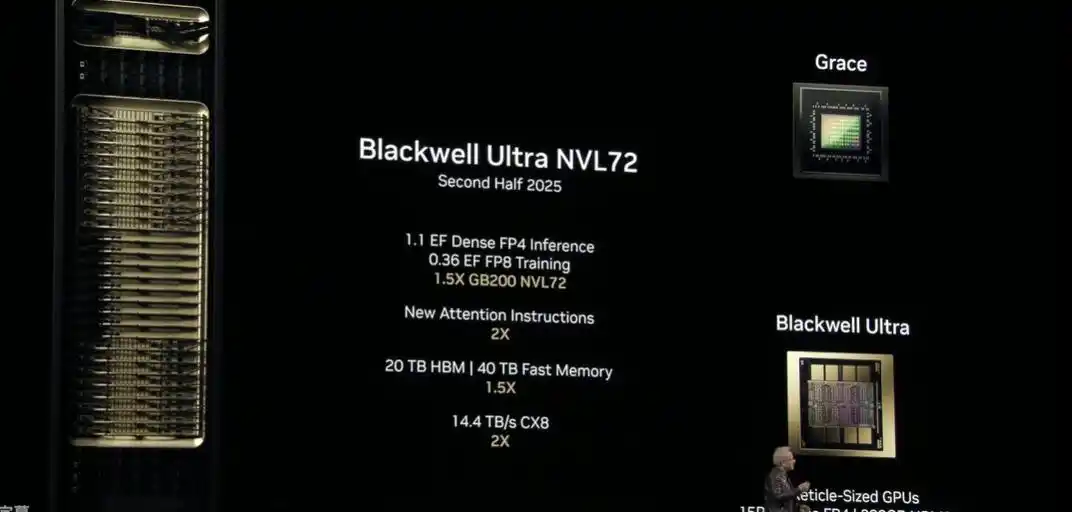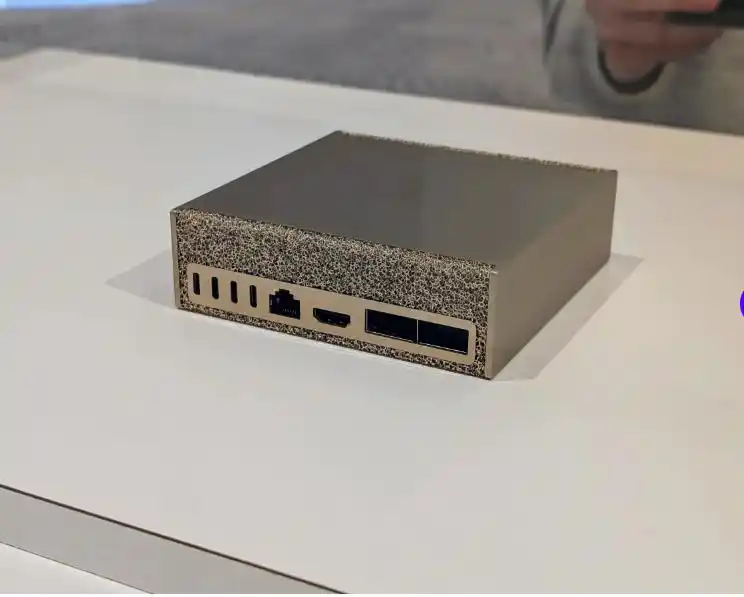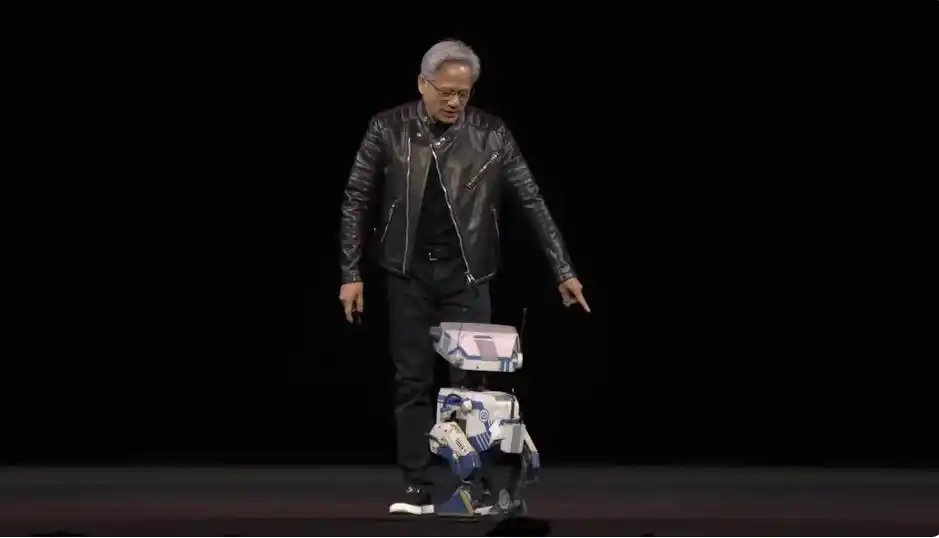From general robot models to AI computers, a quick look at the new products released by Nvidia GTC in one article

Reprinted from panewslab
03/19/2025·2MAuthor: Liu Rui, Cailianshe
On Tuesday, March 18, local time, Nvidia CEO Jensen Huang delivered a keynote speech at GTC 2025, Nvidia AI event held in San Jose, California.
In this two-hour and 20-minute speech, Huang Renxun looked forward to the prospects of AI technology evolution and computing demand, and announced the planned shipment time of Nvidia's latest generation of Blackwell architecture and the subsequent generations of products. He also revealed the progress of Nvidia's cooperation and research and development with other technology giants in the fields of autonomous driving, AI networks, and robots.
Despite the huge amount of information, Wall Street's response to the speech seemed to be relatively dull. As of Tuesday's closing, Nvidia's stock price closed down 3.43%, and subsequently fell 0.56%.
**Imagine the future: There is still huge room for improvement in
computing demand**
At the beginning of his keynote speech, Huang Renxun proposed his vision for artificial intelligence based on the current timetable for the development of artificial intelligence. He described four waves of artificial intelligence:
- Perception AI: Launched about 10 years ago, focusing on speech recognition and other simple tasks.
- Generative AI: The focus of the past 5 years involves text and image creation through prediction modes.
- Agent AI: The current stage of artificial intelligence interacting digitally and performing tasks autonomously, characterized by inference models.
- Physical AI (Physical AI): The future of AI, powering humanoid robots and real-world applications.

Huang Renxun pointed out that the artificial intelligence industry faces "huge challenges" in computing, saying that at the current stage of generative AI, the computing requires 100 times more tokens and resources than originally expected. He explained that this is because the reasoning model requires tokens in many steps in the inference process.
However, Huang Renxun insisted that the industry has good feedback and the demand for more computing is being met, and emphasized that in just one year, the AI infrastructure market segment has shown amazing growth.
He revealed that in 2024, the top four major cloud service providers (CSPs) in the United States and the so-called superscale cloud service provider (hyperscaler) have purchased 1.3 million Nvidia's Hopper architecture chips, and in 2025, they purchased another 3.6 million Blackwell architecture chips.
He stressed that data center infrastructure is expected to expand rapidly, predicting that capital expenditures for data center infrastructure will exceed $1 trillion by the end of 2028 driven by demand for artificial intelligence and accelerated computing.
Showcase the product roadmap in the next few years
Immediately afterwards, as it had been widely expected by the outside world, Huang Renxun confirmed in his speech that Nvidia will launch the successor product of the current generation of Blackwell GPUs in the second half of 2025
- Blackwell Ultra.
"Blackwell has been fully put into production, with incredible production growth. The customer demand is incredible... We will easily transition to the Blackwell Ultra."
In addition to the Blackwell Ultra chip, Nvidia has also launched the GB300 super chip, which combines two Blackwell Ultra chips and a Grace CPU.

Huang Renxun also said that Nvidia will launch the next-generation AI super chip Vera Rubin in the second half of 2026 and the next-generation super chip Vera Rubin Ultra in the second half of 2027 - this is also consistent with previous expectations from the outside world.
Huang Renxun also revealed that the next generation of chips after Rubin chips will be named after physicist Richard Feynman, continuing his tradition of naming the chip series after scientists. According to the slideshows displayed by Huang Renxun, the Feynman chip is expected to be available in 2028.
New AI computers are available
In addition to chips, Huang Renxun has also announced the launch of new laptops and desktop computers that use their chips, including two AI-focused computers called DGX Spark and DGX Station, which will be able to run large AI models such as Llama or DeepSeek.
Among them, DGX Spark is Project Digits that first appeared at CES earlier, while DGX Station is a larger workstation-level desktop.
Huang Renxun claims that DGX Spark is "the smallest supercomputer in the world". It is equipped with a GB10 Grace Blackwell super chip in a body that is no larger than the Mac mini, and has an AI computing power of up to 1,000 TOPS, making it suitable for "AI developers, research experts, data scientists and students to develop and fine-tune large AI models in offline environments." Spark is expected to be priced at around $3,000, and will be available for pre-order and shipment in summer today. Currently, Dell, Lenovo, HP and others are expected to launch products corresponding to Spark.

DGX Spark
As for the more powerful DGX Station, it uses GB300 Grace Blackwell Ultra, providing 20,000 TOPS of AI computing power and up to 784GB of memory. The price of the DGX Station has not been announced yet and is expected to be available later this year.
Dynamo: The core operating system of the AI factory
To further accelerate large-scale reasoning, Huang Renxun also released NVIDIA Dynamo, an open source software used to accelerate and expand AI inference models in the AI factory.
"It is essentially the operating system of the AI factory," Huang said. It was named after the first instrument that launched the last industrial revolution, suggesting that the technology will play a key role in a new round of AI revolution.
Through Dynamo, inference models such as DeepSeek can improve performance by 30 times under the same architecture and the same number of GPUs.
**Launches the world 's first open source customizable universal robot
model**
Huang Renxun pointed out that labor shortage is an urgent problem that all mankind has to face. Robots are a solution. This industry has huge potential. Now we have entered the era of proxy AI, and in the future, we will further move towards physical AI.
To this end, Nvidia launched the GR00T N1, a general basic model designed for robots. This is the world's first open, fully customizable universal humanoid reasoning and skills basic model.
Nvidia is also working with Google DeepMind and Disney to develop a robotics platform called Newton. Huang Renxun specially invited a robot named "Blue" to show it on stage, which is one of the achievements of the development of the Newton platform.

The robot created by NVIDIA in collaboration with Disney Research and Google DeepMind also appeared on the stage
Work with General Motors to build AI self-driving and smart factories
Huang also announced that GM will expand its partnership with Nvidia to promote innovation by accelerating computing and simulation.
GM will use Nvidia’s computing platform, including Omniverse and Cosmos, to build customized artificial intelligence (AI) systems to optimize GM’s factory planning and robotics technology.
In addition, GM will also use NVIDIA DRIVE AGX as on-board hardware to achieve future advanced driving assistance systems and enhanced in-car safe driving experience. DRIVE AGX is a scalable open platform that acts as the AI brain for autonomous vehicles.
Will cooperate to develop AI native 6G network
Huang Renxun said Nvidia will work with T-Mobile, Mitre, Cisco, ODC and Booz Allen Hamilton to develop the hardware, software and architecture of AI-native 6G wireless networks.
For more details, please click to read "Nvidia announced: It will work with telecom giants to develop AI 6G wireless technology"
Establish a quantum computing research center
In addition to the above, Nvidia announced Tuesday that it will establish a research center in Boston to provide cutting-edge technology for advancing quantum computing.
According to NVIDIA's official website, NVIDIA Accelerated Quantum Research Center (NVAQC for short) will integrate leading quantum hardware with artificial intelligence supercomputers to realize the so-called accelerated quantum supercomputing. NVAQC will help solve the most challenging problems in quantum computing, from quantum bit noise to converting experimental quantum processors into practical devices, and more.
Leading quantum computing innovators, including Quantum, Quantum Machines and QuEra Computing, will leverage NVAQC to drive progress by working with researchers from top universities such as the Harvard Quantum Science and Engineering Initiative (HQI) and the MIT Engineering Quantum Systems (EQuS) team.
“Quantum computing will enhance artificial intelligence supercomputers to solve some of the world’s most important problems, from drug discovery to material development,” Huang said. “Working with the wider quantum research community to advance CUDA-quantum hybrid computing, NVIDIA Accelerated Quantum Research Center will make breakthroughs in creating large-scale, useful accelerating quantum supercomputers.”
Launch the world basic model
NVIDIA also announced the launch of the new NVIDIA Cosmos™ World Basics Models (WFMs) on Tuesday, introducing an open and fully customizable inference model for physical AI development and providing developers with unprecedented world generation control.
Nvidia has also launched two new blueprints, powered by the NVIDIA Omniverse™ and the Cosmos platform, providing developers with a large-scale, controlled synthetic data generation engine for trained robots and autonomous vehicles.
Industry leaders such as 1X, Agility Robotics, Figure AI, Foretellix, skillai and Uber are the first to adopt Cosmos to generate richer training data for physical AI faster and at a larger scale.
"Just like large language models revolutionize generative and proxy AI, the basic model of the universe is a breakthrough in physical AI... Cosmos has introduced an open, fully customizable inference model for physical AI and created opportunities for step function advancement in the robot and physics industries."



 chaincatcher
chaincatcher